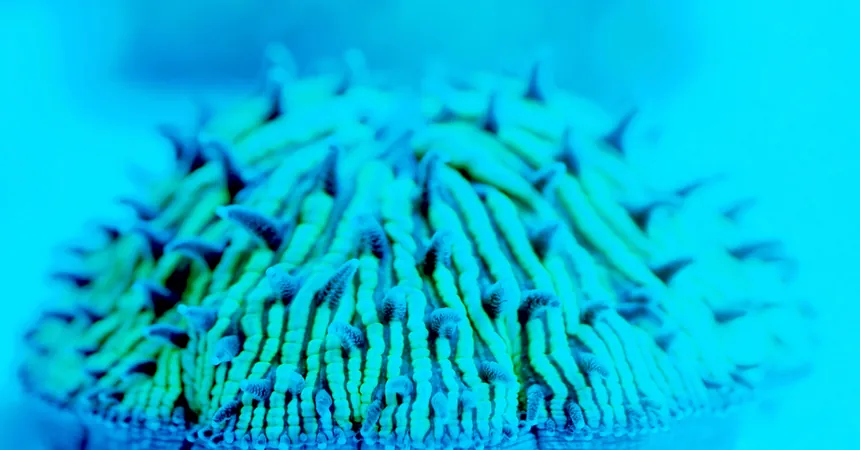
The Surprising Mobility of Mushroom Corals: Nature’s Tiny Wanderers!
2025-01-23
Author: Chun
Introduction
Corals are often celebrated for their mesmerizing variety of shapes, sizes, and vibrant colors. These marine wonders form extensive reefs that provide safe haven for a staggering array of ocean biodiversity. However, most corals have one thing in common—they are sedentary. Of the 6,000 known coral species, the majority are colonial organisms, living in close proximity and firmly anchored to the ocean floor.
Discovering Movement
Yet, beneath the vast blue, a lesser-known group of corals is defying convention: solitary mushroom corals, some of the only corals capable of movement. Marine ecologist Brett Lewis from Queensland University of Technology has shed new light on these enchanting creatures, describing them as "adorable" and "very little."
Research Insights
Dr. Lewis's groundbreaking research, detailed in a recent study published in the journal PLoS One, demonstrates that mushroom corals show a strong inclination toward blue light, a signal of deeper waters. In controlled trials, these little corals would inch their way toward a beam of blue light, revealing their preference for calmer, deeper habitats over shallow coastal environments.
How They Move
Wondering how these corals manage to "walk"? It turns out their locomotion shares similarities with jellyfish. Dr. Lewis explains that like their gelatinous cousins, mushroom corals inflate their outer tissues before releasing them swiftly, allowing the coral to "pop" forward and effectively hop across the seafloor.
The Speed of Movement
Though time-lapse videos may portray their movements as sprightly, in reality, these creatures move at a snail's pace. In one experiment, a mushroom coral traversed a distance of 220 millimeters over a span of one to two hours. "Watching this was a lesson in patience," Dr. Lewis quipped, humorously detailing his experience of waiting for the coral to move.
Significance of Migration
Bert Hoeksema, a coral taxonomist at the University of Groningen, recognizes the significance of this study in understanding coral behavior and mobility. As mushroom corals embark on life, they often find themselves in crowded communities among colonial corals. As they mature, relocating to deeper regions not only affords them a more serene environment but also improves their chances of successful reproduction.
Motivation for Movement
The motivation for these slow migrations is critical. By moving to calmer waters, mushroom corals can escape unfavorable conditions such as being buried in sand or competing with aggressive species like toxic sponges.
Conclusion
While the incremental movements of mushroom corals may seem trivial compared to the migrations of creatures such as wildebeests or monarch butterflies, it’s all relative. "For them, moving their body length is a significant accomplishment," says Dr. Lewis. He emphasizes that in the grand scheme of evolutionary history, these subtle shifts have played a pivotal role in the survival of mushroom corals for hundreds of millions of years.
From their enchanting colors to their fascinating locomotion, mushroom corals prove that there is much more to these seemingly immobile creatures than meets the eye. As marine scientists continue to delve deeper into the mysteries of the ocean, who knows what other astonishing behaviors await discovery in the underwater world?


 Brasil (PT)
Brasil (PT)
 Canada (EN)
Canada (EN)
 Chile (ES)
Chile (ES)
 Česko (CS)
Česko (CS)
 대한민국 (KO)
대한민국 (KO)
 España (ES)
España (ES)
 France (FR)
France (FR)
 Hong Kong (EN)
Hong Kong (EN)
 Italia (IT)
Italia (IT)
 日本 (JA)
日本 (JA)
 Magyarország (HU)
Magyarország (HU)
 Norge (NO)
Norge (NO)
 Polska (PL)
Polska (PL)
 Schweiz (DE)
Schweiz (DE)
 Singapore (EN)
Singapore (EN)
 Sverige (SV)
Sverige (SV)
 Suomi (FI)
Suomi (FI)
 Türkiye (TR)
Türkiye (TR)
 الإمارات العربية المتحدة (AR)
الإمارات العربية المتحدة (AR)